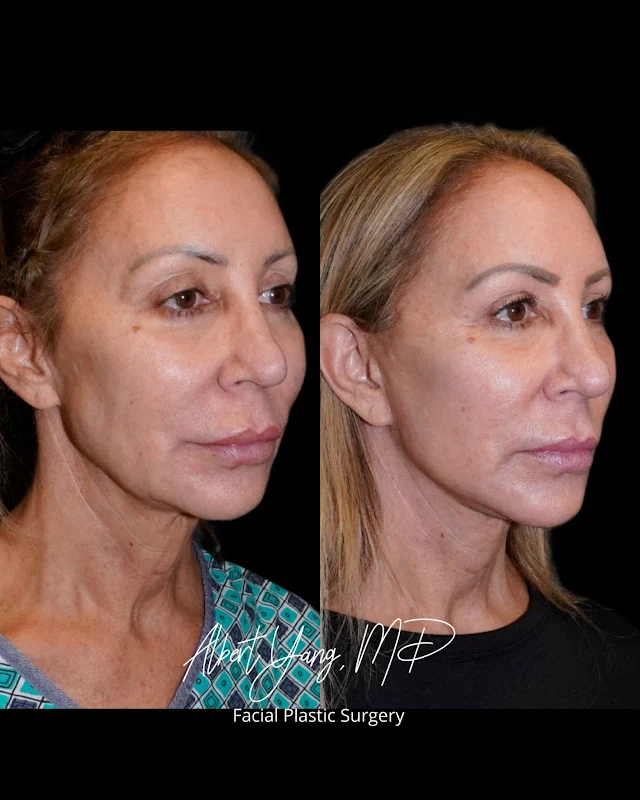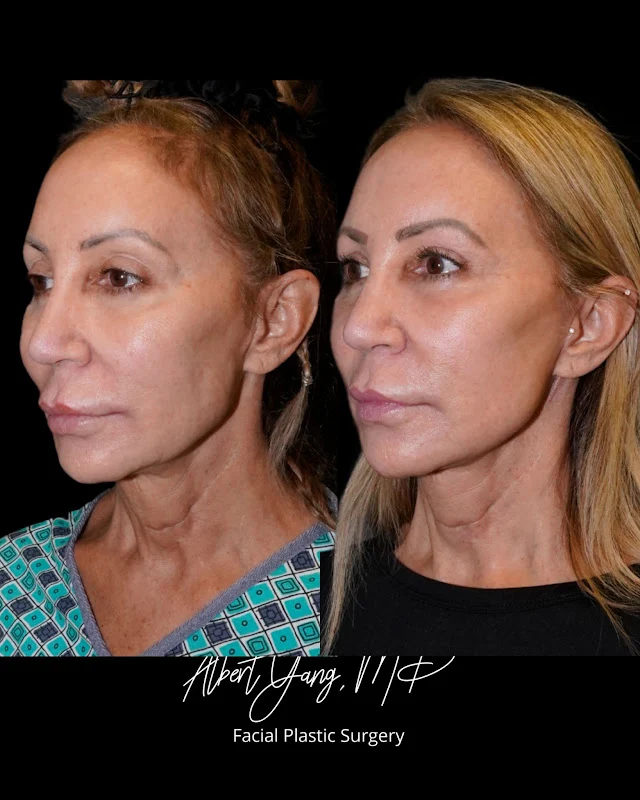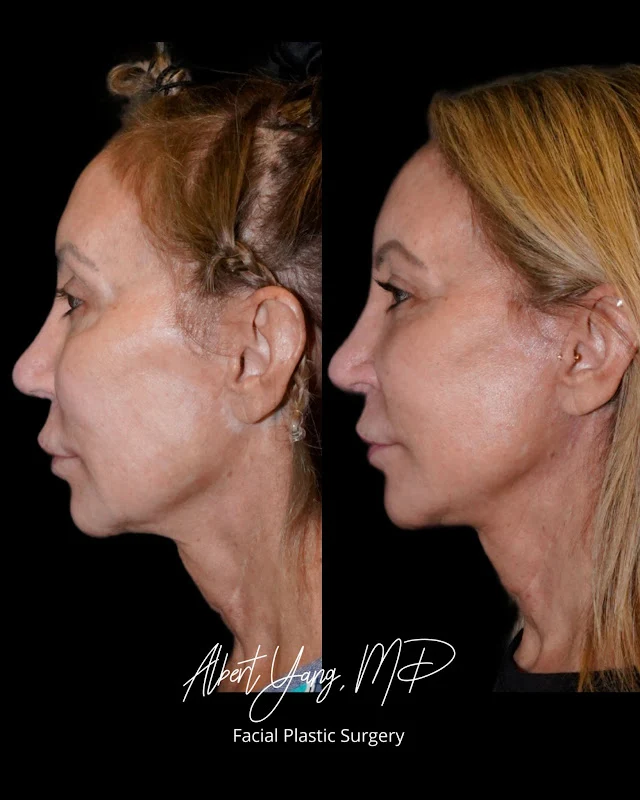Deep Plane Facelift
Conveniently located to serve Seattle and Bellevue
Jump To
What is a facelift?
A facelift, also known as a rhytidectomy, is a surgical procedure designed to restore a more youthful, refreshed appearance by addressing visible signs of facial aging. Over time with age, the skin, muscles, and deeper tissues of the face can loosen and sag, leading to jowls, deep folds, and loss of definition along the cheek, jawline and neck. A facelift works by carefully lifting and repositioning the skin and muscles to restore a more youthful natural contours. The goal is not to change who you are, but to help you look like a younger, well-rested version of yourself, with results that are natural, balanced, and long-lasting.
Deep plane facelift vs. Traditional facelift
There are many techniques to facelift surgery. The traditional facelift technique manipulates the Superficial Musculo-Aponeurotic system (SMAS) in order to reverse sagging of jowls and neck laxity. A deep plane facelift technique requires more extensive dissection of the SMAS layer by releasing four key ligaments of the face. This allows the surgeon to better address cheek elevation along with the jowls and neck laxity. Deep plane facelift also utilizes a composite flap which includes the skin, adipose tissue and SMAS layer as a single unit. This allows the surgeon to volumize and redrape the cheek region and the angle of the jaw. It also allows for improved correction of nasolabial folds and marionette lines. The composite flap is especially helpful in patients with a history of smoking or connective tissue issues to prevent possible skin related complications from the surgery. Because of the more extensive dissection, the surgery is more technically challenging and may require more time in the operating room. There is also a higher potential risk to nerve injury. If you are thinking of getting a facelift make sure it is from a high volume reputable surgeon in order to minimize these risks.
| Feature | Traditional Facelift | Deep Plane Facelift |
|---|---|---|
| Technique | Lifts skin and tightens the SMAS layer | Works beneath the SMAS, releasing facial ligaments and lifting skin and fat together as a composite flap |
| Best For | Jawline and neck definition. | Midface (cheeks), jawline, and neck definition. |
| Result Longevity | About 5–10 years. | About 5–15 years. |
| Look | Natural results around the jawline and neck. | Natural results of the cheek, jawline and neck. Softer nasolabial fold and marionette lines |
| Recovery Time | Social downtime 2–3 weeks. | Social downtime 2–3 weeks. |
| Complexity | Less technically demanding. | More advanced, requires high surgical expertise. |
| Risks | Low | Slightly higher risk of temporary nerve weakness; permanent injury is rare. |
| Scarring | Hidden around ears/hairline. | Hidden around ears/hairline. |
Who is a candidate for deep plane facelift
A good candidate for facelift surgery is someone who is noticing visible signs of aging in the lower face and neck, such as sagging skin, jowls, or loss of jawline definition, and wants a longer lasting solution. Our patient age ranges from 20s to 90s, but age alone doesn’t determine candidacy. The overall health, skin quality, and individual anatomy are more important factors to consider. Ideal candidates are in good general health, do not smoke (or are willing to stop before and after surgery), and have realistic expectations about the results. The goal is not to make someone look like a different person, but to help them look like a younger, refreshed version of themselves.
Before and After Photos



